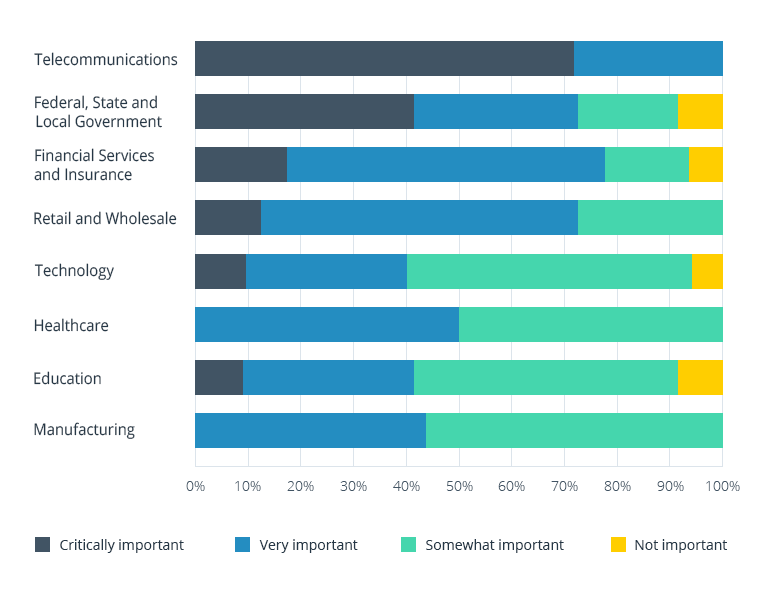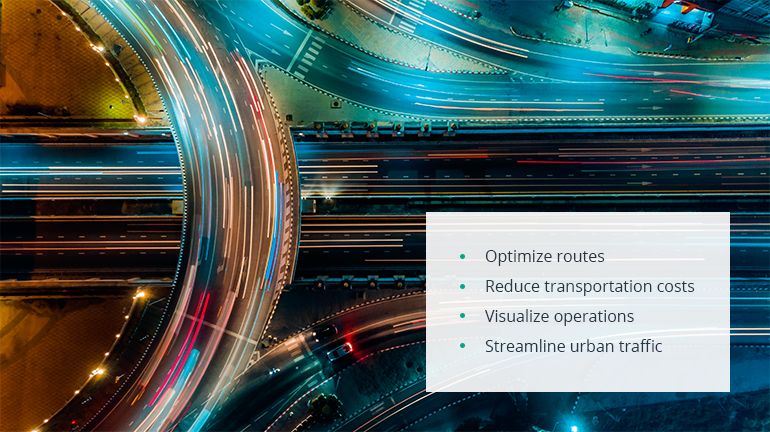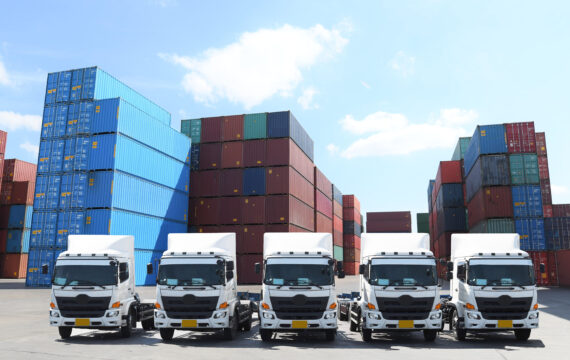The global economy gets intense when it comes to competition and the ability to respond to technological disruption. These factors stimulate companies to look for new solutions to optimize the way they do businesses. A rational application of location intelligence tools can be an ideal instrument for these purposes. Transportation and logistics industries are perfect examples reflecting how data insights help remove constraints and enforce business transformation. Want to know how? Keep on reading.
Establishing connections between distinct data points is what location intelligence does best
As a form of business intelligence (BI), location intelligence (LI) couples business and location data together. To help solve a bunch of business problems, LI solutions analyze geographical and location info to associate it with points on an interactive map. After realizing just how vital location intelligence is, businesses find it critical for their various strategic and operational needs. 66% of enterprises questioned by Dresner Advisory Services’ 2018 Location Intelligence Market Study are of the same opinion and consider it decisive to improve their revenue and growth strategies.
The number of organizations using location intelligence will grow fourfold by 2021.
Over the past years, the use of location intelligence solutions (LIS) has been booming. All thanks to the abundance of data all of us, generously or not, provide for further capturing and analysis. Geospatial data is now produced by nearly every device or equipment we have, starting from smartwatches and fitness trackers to smartphones or our cars. Despite privacy or security concerns, businesses aren’t going to lose the sweet spot of data to deliver more targeted services, take better control of internal operations and win competitive advantages with intelligent mapping solutions.
Importance of location intelligence by industry

Forbes – What’s New In Location Intelligence For 2018?
How Location Intelligence Powers Transportation and Logistics
In the transportation industry, maps and spatial analytics have become a fundamental instrument to defeat ambiguity through better data understanding and intelligent decision-making. For the infrastructure, this means embedded connectivity and new location data sources on road conditions, weather factors, urban infrastructure and so on. The gathered data gets updated in real time and is represented in the form of an interactive map so that stakeholders are in the best position to identify and solve their challenges.
Logistics and transportation optimization problems are multi-layer and challenging to solve. Still, the examples we’re discussing below reveal how LI provides missing insights and helps to remove constraints.
All the logistics data you’ve been losing in the supply chain becomes more transparent with LI

Achieving real-time decision-making and higher efficiency will help manufacturers and retailers respond to the everlasting challenges of supply chain logistics. Location intelligence in this context can make a real difference.
The objectives of LIS used to solve pain points in supply chain logistics are to:
- Keep transportation within schedule
- Enhance visibility and control over transportation spending
- Reduce costs through optimized routing
- Visualize operations to distribute resources during peak demand
- See available inventory
- Streamline operations on a driver’s route
LI software helps to optimize routes, directing vehicles through the most optimal pathways, taking into account lighting, weather and traffic conditions. This allows business owners to achieve a cost-distance ratio, the key benefits of which are reduced time and gas spent on transporting goods. On top of that, business intelligence helps make decisions faster and reduces risks when seeking optimal transportation routes.
The next milestone businesses can reach which location intelligence is greater customer satisfaction. LI platforms allow them to increase visibility and track delivery throughout the supply chain with digital twins as well as manage logistics execution.
The final stage of logistics, the last-mile delivery, can also contribute to location intelligence platforms. As a vital part of omnichannel retailing, the goal of last-mile logistics is to deliver orders to customers as quickly as possible. LI software can help retailers or distributors address this need by reorganizing information into its pathways planning algorithms or by reconfiguring distribution services for specified customers or groups of customers.
Think of GIS tools and geocoding technology. Address parsing, validation and matching algorithms within an LI platform can prevent unwanted costs and delays that result from mistakes or the lack of delivery addresses standardization. On top of that, such software allows adding expanded delivery info like information on the availability of parking spots, stairs or elevator and building type (detached/semi-detached).
Transportation and Logistics Software Development Services
Location intelligence helps streamline and manage urban traffic
The modern population prefers the urban environment and isn’t going to change its preferences anytime soon. Instead, it’s predicted that by the year 2050, 68% of the world’s population will live in urban areas. Which makes transportation systems, route optimization and efficient traffic flow in cities a lingering problem. The situation with commuting in congested traffic, extended travel time and high social cost the society pays for transportation problems are equally sad.
Under the hood of the smart city concept, location intelligence for urban mobility can help city management move toward the optimization of the transportation system. Sounds like a monumental task. And it is, but this can be gradually achieved if we combine several factors. What can help is the mix of city-related data like engineering plans, road networks and land use plus real-time mobility data streams about traffic flows and incidents.
But what’s really fascinating about the use of location intelligence for urban traffic issues is its ability to visualize and predict how a particular move can improve the entire situation. On top of that, LI gathers historical road traffic data for predictive modeling. When location data is visualized and is accessible via a map interface, stakeholders can exercise their predictive capacities while running different scenarios against the data visualized in a map.
Location intelligence fuels transformation in the shared mobility business

Building intelligence platform is another essential piece of the puzzle that lets us unlock the maximum value within a transportation system. Allows designing optimal transit routes and services and helps create an effective digital and physical infrastructure for various logistics and transportation businesses using fleet management systems. But what’s more, it also helps to launch those businesses.
Uber, Maven, BlaBlaCar, Lyft, Ola – all these shared mobility companies exist thanks to location-based technologies. Location intelligence capabilities spur business models of ridesharing or hailing. User-centric apps like Uber that lie at their core are also empowered by LI, allowing users to compare the cost and travel time of shared vehicles with other transportation options.
China, Europe and the United States are the shared mobility main markets of nearly $54 billion in total in 2016. The market could see a 28 percent annual growth from 2015 to 2030.
Highly accurate and reliable, digital maps are the heart of the shared mobility. Unlike other, more traditional business intelligent technologies, sophisticated analytics in location intelligence is presented in the form of maps. This kind of visualization helps mobility businesses establish and show proliferation of data points, supporting their services with a larger variety of information types. Building maps for transportation is a booming and highly-competitive business. Companies will keep investing in this core LI tech since they are perfectly aware of its importance for the future of mobility and even autonomous driving.
Conclusion
Location intelligence for logistics and transportation is all about uncovering extra business value. The value comes from a better understanding of the company context, its end-customers and their actions as well as each and every business operation in space and time slots. LI software allows transportation and logistics businesses to plan resource and shipment allocation to meet the capacity and market-based preferences.
These are the main reasons why the development of location intelligence platforms will continue its upward trajectory. While developers will be busy adding location analytics to the new software they design, geocoding and location data enrichment will allow businesses to upgrade the location-related services they render. Today, location intelligence is an essential factor in beating competition, revealing business insights and supporting better decision making.



